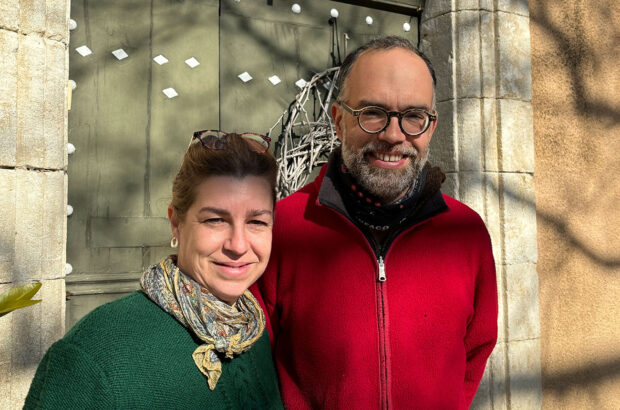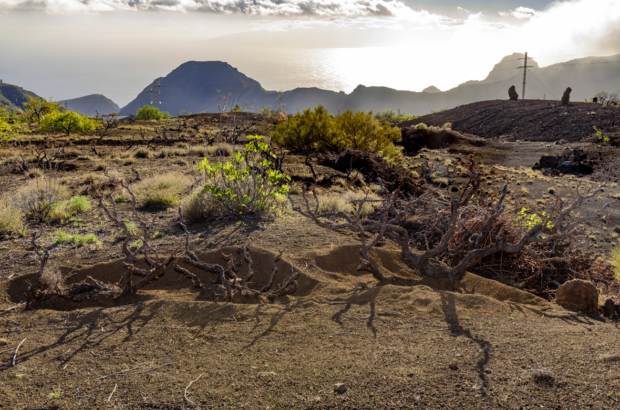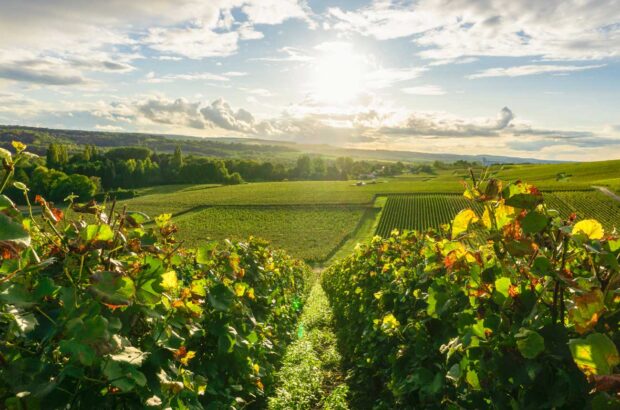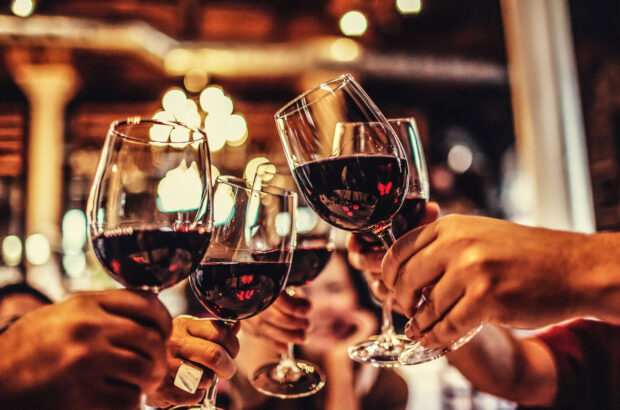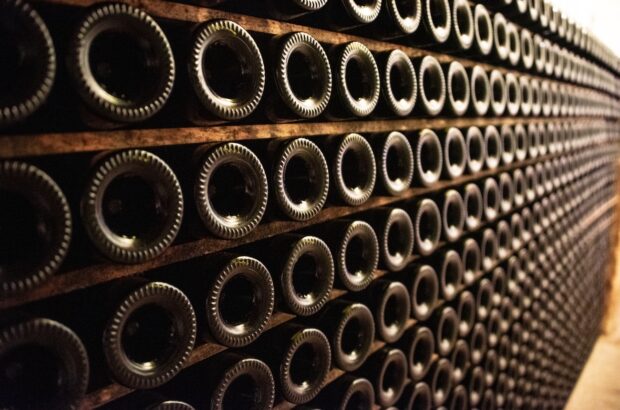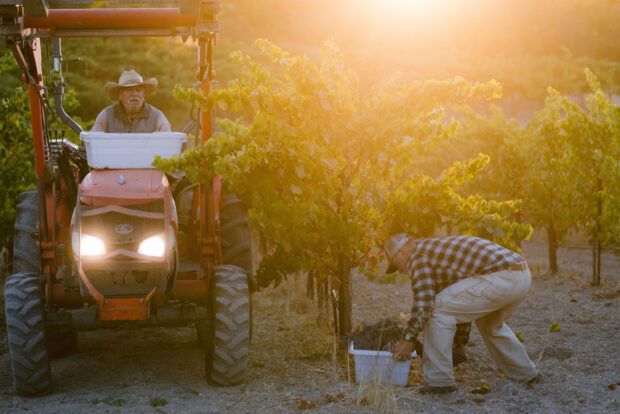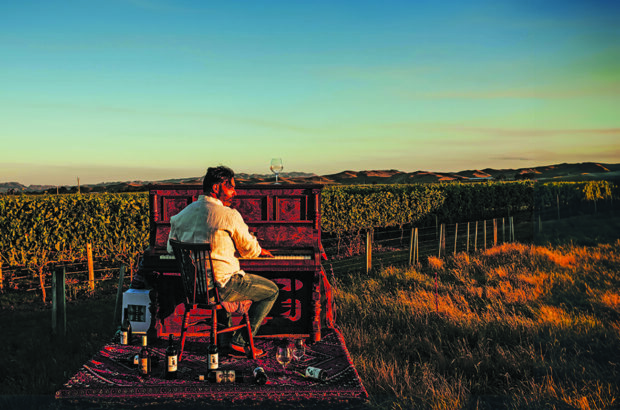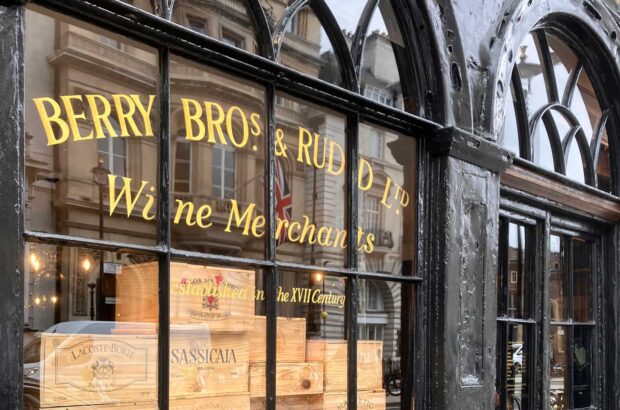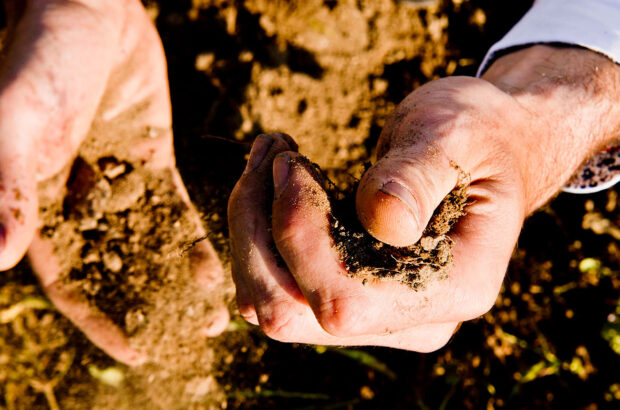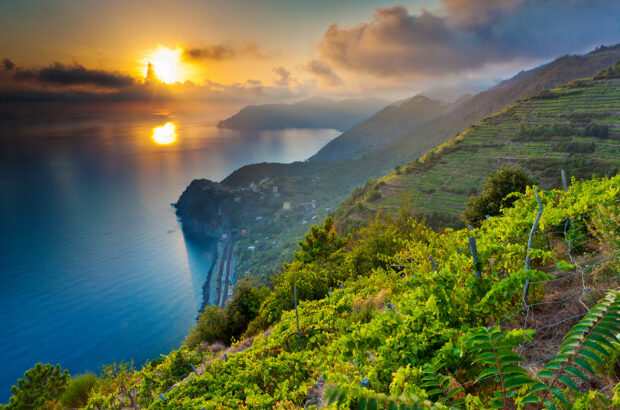CONAL GREGORY MW investigates the Chilean speciality grape Carmenère and the exciting Bordeaux style wines that are now being created with it.
To the French who relocated to 19th-century Chile, the vine culture of Bordeaux was a familiar one. When they imported Bordeaux grapes to reinvigorate their new land, Carmenère would have been a natural choice, along with Cabernet Sauvignon and Merlot. Today, not only is Carmenère appreciated in its own right, it also helps to create complex blends that give Chile a distinctive Bordeaux style.
Spain was almost certainly the source of Chile’s original vineyards in the 1550s, yet it was not until 1830 that a more systematic approach to vine varieties was undertaken by the French scientist, Claude Gay. However, it was Silvestre 0chagavia who took the initiative 21 years later and imported the classic French varieties which set the firm foundations for today’s trade. Although they didn’t know it at the time, this vine shipment happened only years before the dreaded aphid phylloxera attacked the vineyards of Bordeaux and, by 1877, the direction of trade had reversed as Chile had the quality and stock to actually export wine to Bordeaux. Chile remains one of the few places where vines are directly planted without the need to graft and, as a result, vines are in economic production after just three years.
Carmenère was an integral part of Bordeaux’s pre-phylloxera success, yet when replanting took place to contain the aphid, low yields and poor fruit setting led to the variety falling out of favour, even though it was part of the Cabernet vitis vinifera family.On a visit to Chile in the early 1990s, Robert Mondavi and Eduardo Chadwick of Errazuriz thought they had discovered a distinct clone of Merlot with a greater intensity of flavour. In fact, it was Carmenère, planted randomly among Merlot grapes, and ampelographers only positively identified the vine seven years ago (its shoot tips are cottony with pinkish tones, while Merlot is white). Chile is unsure how much Carmenère exists in older vineyards as so much is integrated with Merlot. Officially it has raised its figures from 330 hectares (ha) in 1997 to 2,306ha in 1999 (the most recent data available), but this reflects only those vines that have been positively identified and many growers estimate that between 60–90% of ‘Merlot’ is actually Carmenère. In the past, much Carmenère was sold as Merlot, but now distinct plots are being created. The leaf has a denser formation and its grape size is larger. As a wine, it has an unripe, stalky aroma, not dissimilar to young Cabernet Sauvignon, while on the palate its low acidity and ripe smoky fruit character with a hint of spice make it instantly appealing.
Today, along with Cabernet Sauvignon, Merlot and Syrah, Carmenère is one of the four red varieties being actively planted. 0fficially the yield increased from 13,800 hectolitres (hl) to 26,6400hl between 1998 and 1999, while Merlot rose from 359,500hl to 386,200hl. By comparison, the coarse Pais (sometimes called Negra Peruana) is being uprooted. Most Carmenère is planted in the Rapel region, notably the Colchagua Valley. Carmenère can rarely be found in Bordeaux today (a tiny display row is cultivated at first growth Château Mouton-Rothschild), although it can occasionally be discovered growing in the Veneto region of north-east Italy. For Colli Euganei Rosso DOC it is blended with at least 60% Merlot and smaller parts Cabernet Franc and Cabernet Sauvignon, and the result is a stunning wine with real complexity that deserves a wider audience. So, Carmenère is effectively indigenous to Chile. Chilean producers increasingly recognise this and are releasing wines based on this single grape, as a unique selling point. The best producers hold off picking until May when the grapes are really ripe, yet this can produce a rather one-dimensional wine, although Chile has enjoyed great success blending it with Merlot. Such wines have an immediate fruity appeal with an underlying softness, sometimes slightly sweet, that makes them enjoyable both on their own or with lamb and beef dishes.
The potential is there for more complex and finer reds, akin, perhaps, to the 18th and early 19th-century ‘Bordeaux blends’. It will require mature vines, careful handling of smaller quantities at the winery, a greater willingness to use wood for longer periods and real blending skills but, with relatively low labour costs, Chile could challenge not only claret but the ’boutique’ wineries of New Zealand and the USA. Several synonyms are used for Carmenère: Carbouet, Carmenelle, Cabernelle, Grande Vidure (notably by the Carmen winery) and Grant Carmenet. While Merlot will continue to be significant in Chile, in the future Carmenère will become more important, predicts Mario Pablo Silva of Vina Casa Silva of Angostura near San Fernando, which won the coveted Top South American Producer award at the 2000 International Wine & Spirit Competition.
Casa Silva has Carmenère planted in three districts of Colchagua: 20ha at Los Lingues in the north on the foothills of the Andes, designed for ‘reserve’ quality; 5ha of 90-year old vines at Angostura; and 33ha at Lolol to the south of the valley, nearer the Pacific coast. It aims to use 250,000 litres of its 350,000 litres of Carmenère as a single-grape wine and blend the rest in three different ways: with 50% Merlot; in the Gran Reserva Quinta Generacion, with 52% Cabernet; and in the ultra-premium Altura (with 20% Merlot and 60% Cabernet). Although it has lower yields and more problems in the vineyard, Errazuriz feels Carmenère is superior to Merlot and has made new plantings in the coastal-influenced Aconcagua Valley. It also has a mixed plot with Merlot on more fertile loam clay in Curico, which enjoys a more continental climate.
The link between Chile and Bordeaux continues with Baron Philippe de Rothschild, which produces and markets wines with Concha y Toro. Under the Almaviva name (the main character in The Marriage of Figaro), a ‘Bordeaux blend’ has been created, dominated by Cabernet Sauvignon. Separately, the first vintage (1999) of Rothschild’s Escudo Rojo, which uses Carmenère, Cabernet Sauvignon, Cabernet Franc and only 5% Merlot, has just been released. The grapes are bought in from growers, unlike the 40ha plot at Puente Alto for Almaviva, and Escudo Rojo enjoys one year’s maturation in French oak.
Julian Brind MW of Waitrose considers Carmenère ‘a favourite and great value for its quality’. The supermarket’s selection includes MontGras Carmenère Reserva (£5.99), which is 85% Carmenère blended with Cabernet Sauvignon from 60ha in the Colchagua Valley, and Valdivieso’s oddly named Caballo Loco no 4 (£14.99). The latter is a blend which uses up to 15% from a previous year’s blend, akin to the ‘solera’ system for sherry. Carmenère was included in the first three such blends, Pinot Noir was also in the first and Syrah will be in the fifth, to be launched this autumn. Philippe Debrus from Lyon, who worked at Simi in California and Kendall-Jackson in Chile, has been Valdivieso’s winemaker since 1995. Valdievso has also developed straight varietal wines and ‘barrel selection’ blends, where two to four-year-old oak barrels are used for up to eight months.
Veramonte sources its grapes from the coastal Casablanca Valley, which has a cool, Carneros-like climate. The Huneeus family behind the Veramonte label pioneered viticulture there in 1990. Its success with Primus, a stylish blend of 85% Carmenère and the balance of Cabernet Sauvignon, matured for one year in French and American oak, is marked. Agustin Huneeus calls Carmenère ‘the lost Bordeaux grape’ and says the vine is making ‘a strong comeback as a key blending component for premium wines’. Concha y Toro’s star winemaker is Ignacio Recabarren. He released its Terrunyo Carmenère 1998 last year – 80% Carmenère, 10% Merlot, 10% Cabernet Sauvignon, all sourced in the permeable poor soil of the Peumo Valley. At only 35 hectolitres per ha, the yield from 12-year old vines was more like a top quality claret. It was aged in 225-litre French oak barrels for one year and bottled without filtration. Santa Laura is not yet well known. Alejandro Hartwig was a grape farmer in the Colchagua Valley until six years ago, when he decided to vinify the top 15% of his production. His Carmenère is made from seven-year-old vines and is fermented in stainless steel and a quarter later fermented in French and American oak for four months.
Undurraga is the source of Tesco’s Carmenère, made by Hernan Amenabar. The firm was founded in 1885 and is based in the Maipo Valley. The concentration of summer sun and long dry season makes irrigation of this variety essential, according to Undurraga. Carmen can trace its foundation to Maipo in 1850 and is therefore Chile’s oldest producer, based on 53ha of French vines. Today it has a 45,000hl capacity. Carmenère has been one of its principal successes, created by Bordeaux-trained Alvaro Espinoza, who has also developed biodynamic viticulture. The Massenez family of Alsace owns Chateau Los Boldos in central Chile. While it is known for making eaux-de-vie, the 250ha estate near Requinoa in central Chile yields a blend – labelled ‘grand cru’ – of Cabernet Sauvignon and Merlot, planted in 1948 and 1959 respectively.
Another link with France is the winery of William Fèvre, the noted Chablis producer, which produces 500,000 bottles from Pirque, 30km south of Santiago. Among the varieties cultivated here, you guessed it, Carmenère, which is made in small tanks that hold up to 7,000kg of grapes with ageing in American oak for nine months.
Canepa is one of the few producers to make two quality levels of Carmenère. The Winemaker’s Selection 2000 and the more complex Private Reserve 1998, which is made from non-irrigated vines with half the yield: 6,000kg per ha instead of 12,000kg. The 1998 also spent 14 months in small, French oak barrels.
STRAIGHT CARMENERE
Concha y Toro Terrunyo 1998 *****
Violet black intensity; cinnamon, nutmeg nose; smooth rich palate; light tannin. £11.99; WMN, Chv,
William Fèvre Gran Cuvée 1999 ****
Appealing green pepper nose; smokey fruit; keep two/three years. £8.50–9; HBJ
Anakena Reservado 2000 ****
Smokey, damson nose; rich, full-bodied, good length on palate. £7.99; Evy
Laura Hartwig 2000 ***
Nose of orange peel; mulberry fruit, spicy, light tannin palate. £7.99; PLB
Santa Rita Reserva 1999 ***
Violet black intensity; nose of unripe stalky fruit; tannic, young damson fruit on taste. £6.99; BWC
Aromo Reservado 2000 **
Plum red; light fruity nose; palate shows raspberries; short light style. £5; All
Casa Silva Reserva 1999 **
Young, stalky, fruity nose; smokey fruit, mid-tannins; keep two years. £8.50; NoG, Aus
BORDEAUX BLENDS
Veramonte Primus 1998 *****
Violet black; rich blackcurrant nose; palate of rich fruit with herbs and cedar; keep two years. £10; Stk
Casa Silva Quinta Generacion Gran Reserva 1999 ****
Merlot and Carmenère. Smokey mulberries on nose, lovely structure with good depth. Keep up to four years. £17.95; Ben, Aus
La Palmeria Gran Reserva 1999 ****
Merlot and Cabernet Sauvignon. Deep red; vanilla and blackberry fruit on nose; vanilla, thyme, tannic fruit on taste.
£7.99; HWC
Montes 1999 ****
70% Cabernet Sauvignon and 30% Carmenère. Stylish cedary, fruity nose; palate of autumn fruits; integrated wood tones; mid-length. £7.95; HWC
Rothschild Escudo Rojo 1999 ****
Carmenère, Cabernet Sauvignon, Cabernet Franc and Merlot. Violet black; promising rich fruity nose; silky depth
on palate, tannic; mid-length; keep three years. £8.99; Pgn
Santa Rita Floresta 1998 ****
Merlot and Cabernet Sauvignon. Violet black; rich nose of violets and blackberries; blackberry palate with mid-tannins; good balance; keep three years. £8.99; Odd
Carmen Reserve 1998 ***
Carmenère, Cabernet Sauvignon. Bitter chocolate and mint nose; palate of unripe, stalky fruit with chocolate; keep three years. £7.41; Lay, StG
Carmen Winemaker’s Reserve 1997 ***
Cabernet Sauvignon 50%, Carmenère 20%, Petite Sirah 20%, Merlot 10%.
Nose of red fruits and mace; chocolate and tannic fruit; mid-length; keep four years. £7.41; Lay, StG
Château Los Boldos Grand Cru 1997 ***
Cabernet Sauvignon, Merlot. Garnet red; dark chocolate, cedar nose; subtle fruity smokey palate with mid-tannins; keep three years. £20; HBJ
Rothschild Almaviva 1998 **
Deep rich blackcurrant; nose of ripe jammy fruit; soft, short, fruity taste; drink now. £47; Pgn


